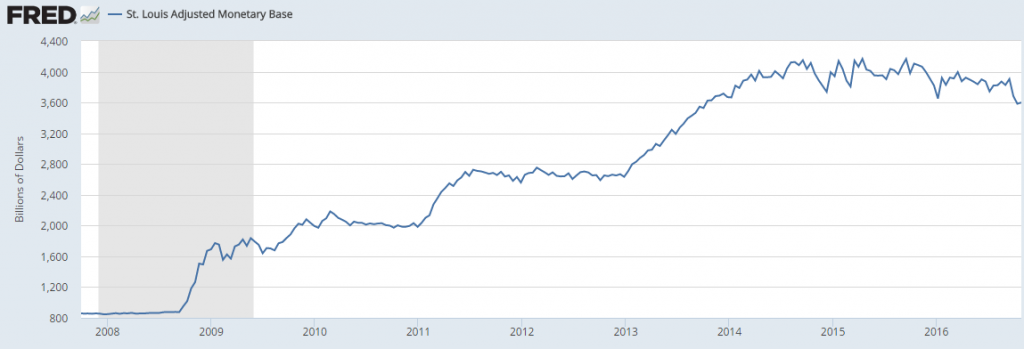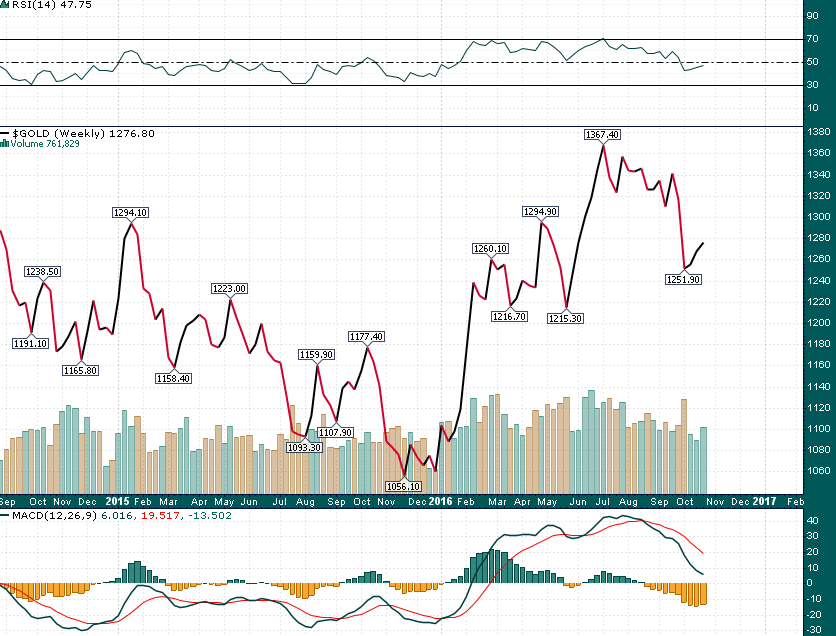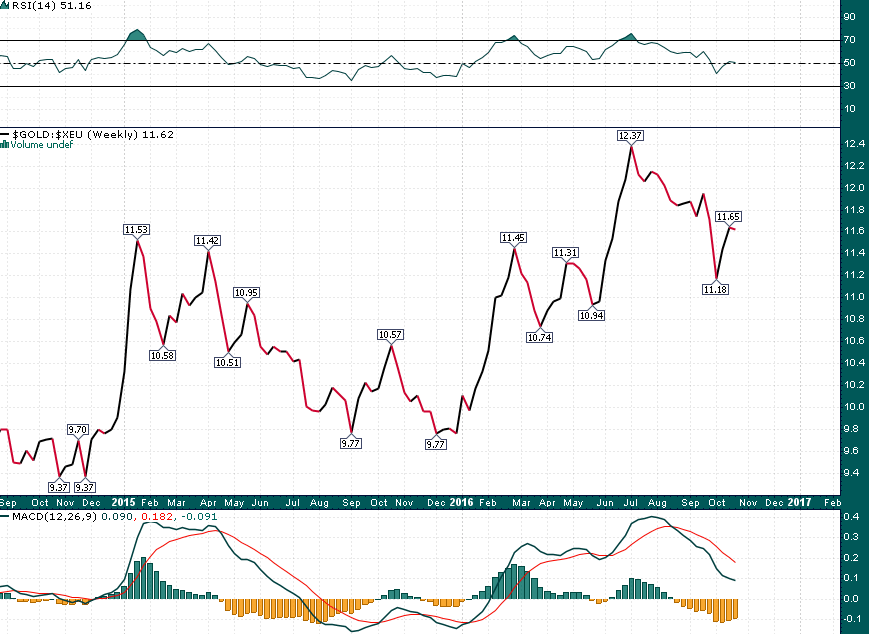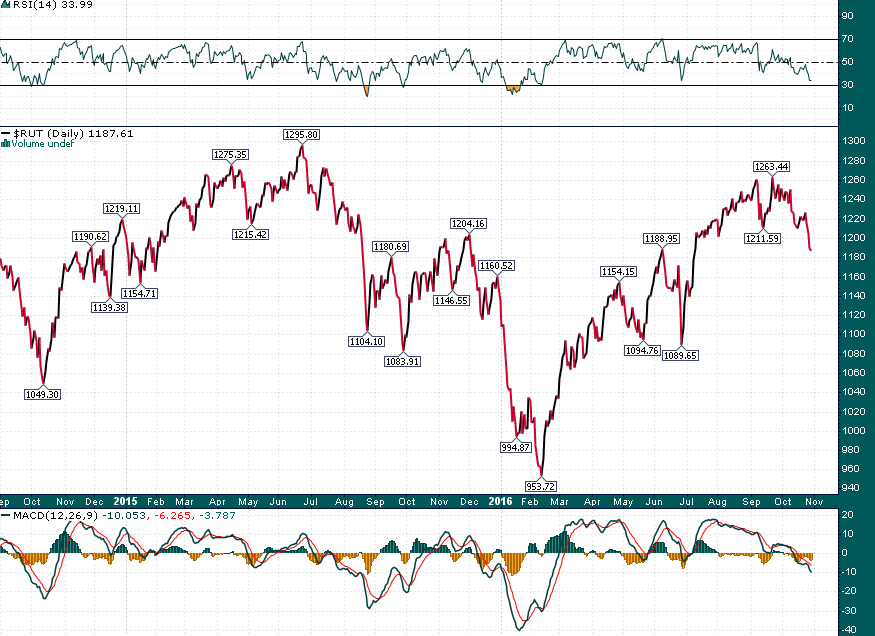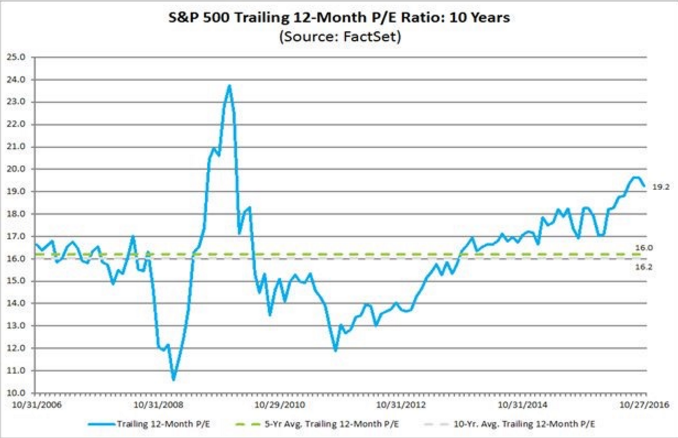At the 2016 New Orleans Investment Conference last week Dennis Gartman, Founder & Editor of the Gartman Letter, was bullish on the US dollar. His primary rationale for this dollar bullishness is the decline in the adjusted monetary base during the last couple of years:
Source: FRED
The adjusted monetary base essentially peaked in September 2014 and has spent the last couple of years gradually working its way lower to the tune of more than $500 billion ($.5 trillion). Gartman pointed out that this is a form of monetary policy tightening that few have noticed as most are focused on the Fed Funds rate or the size of the Federal Reserve balance sheet.
With an imminent Fed rate-hike in December Fed monetary policy only stands to tighten further over the near term. This along with a multitude of demographic factors has Gartman bullish on the US dollar relative to other major currencies such as the euro and the yen.
“Why would you want to own gold in US dollar terms when you can own it in yen, ruble, or euro terms?” ~Gartman
It’s interesting to note that gold in US dollar terms has experienced virtually zero net change since September 2014:
Meanwhile, gold in euro terms is up ~20% over the same time frame:
In addition, the S&P 500 made another marginal all-time high in August, however, the broadest measure of US equity performance (Russell 2000) has gained less than 1% since September 2014:
In just the last week the Russell 2000 broke below an important area of support; it is worth noting that small cap equities (Russell 2000) have a strong track record of leading the senior equity indices at key market turning points. Last week’s small cap breakdown is something to definitely keep an eye on.
Gartman also expressed the view that a rising US dollar and tighter Fed monetary policy will serve as headwinds for equities trading near record high valuations:
With the S&P 500 trailing 12-month P/E currently ~20% above its historical average if a mean reversion is going to take place one of two things will have to happen: stocks drop OR earnings rise as stock prices rise less. My bet is on the former.
The biggest factor investors will want to focus on is inflation. Inflation levels have begun to turn higher globally and the Fed’s preferred measure of inflation (core PCE) is very close to its 2.0% target level. Treasury yields have confirmed this turn in inflation expectations by posting a significant rally since July. If inflation continues to accelerate the Fed will be forced to tighten at a faster pace which should serve to strengthen the bid in the dollar and pressure equities and precious metals lower. However, if inflation expectations cool off we are likely to see a gradual (very gradual…) pace of Fed hiking which will be supportive for a continuation of the relatively placid market backdrop we have experienced in recent months.
Simply stated I agree with Mr. Gartman, the US dollar is supported by a raft of tailwinds for the foreseeable future, while the opposite is true for US stocks.
DISCLAIMER: The work included in this article is based on current events, technical charts, and the author’s opinions. It may contain errors, and you shouldn’t make any investment decision based solely on what you read here. This publication contains forward-looking statements, including but not limited to comments regarding predictions and projections. Forward-looking statements address future events and conditions and therefore involve inherent risks and uncertainties. Actual results may differ materially from those currently anticipated in such statements. The views expressed in this publication and on the EnergyandGold website do not necessarily reflect the views of Energy and Gold Publishing LTD, publisher ofEnergyandGold.com. This publication is provided for informational and entertainment purposes only and is not a recommendation to buy or sell any security. Always thoroughly do your own due diligence and talk to a licensed investment adviser prior to making any investment decisions. Junior resource companies can easily lose 100% of their value so read company profiles on www.SEDAR.comfor important risk disclosures. It’s your money and your responsibility.

